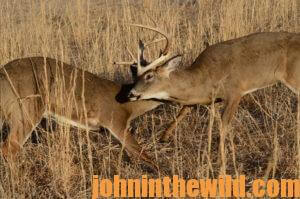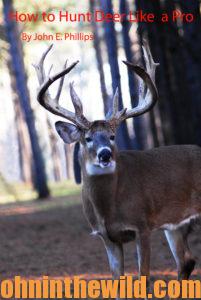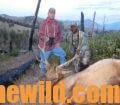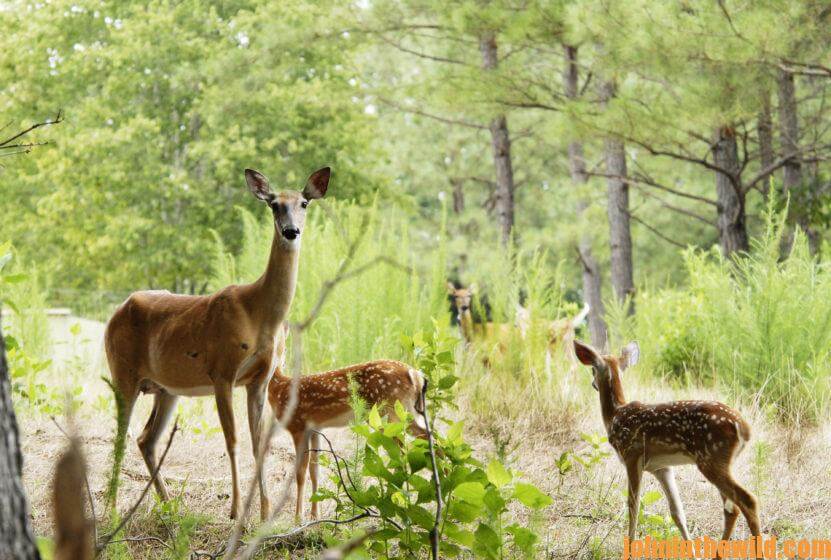Editor’s Note: Grunting, snorting, bleating and other deer sounds are hot tactics in deer hunting. There’s nothing mystical about deer calling – it’s simply using the sounds deer normally make in the woods to entice them to come near your stand. These techniques, even when mastered, aren’t a cure-all for hunting woes but are other strategies the serious, well-prepared hunter can pull from his bag of tricks to hunt smarter. What’s a hunter saying to a deer when he blows a call? What calls are the most effective? What is communicated by the different sounds that the hunter attempts to imitate? Almost every hunter and call manufacturer has speculated about these questions and their answers. Dr. Larry Marchinton, the former head of the University of Georgia’s Deer Research Project, shares his research on deer vocalization this week.
 “First of all we have to define deer vocalization as sounds that deer make to communicate with one another,” Marchinton explains. “We’re just in the infant stages of learning how deer communicate. So, at this point, we’re trying to learn what questions to ask about deer communication, rather than coming up with hard-formed conclusions. Although deer may very well have a language, we don’t know this for sure.
“First of all we have to define deer vocalization as sounds that deer make to communicate with one another,” Marchinton explains. “We’re just in the infant stages of learning how deer communicate. So, at this point, we’re trying to learn what questions to ask about deer communication, rather than coming up with hard-formed conclusions. Although deer may very well have a language, we don’t know this for sure.
“Deer vocalization is a relatively-new area of investigation. The first papers containing scientific data on the topic were published in 1981 – one by a gentleman named Richardson at the University of Michigan and the other by Tom Atkinson for his Ph.D. dissertation at the University of Georgia. From these papers and the resulting research through the past 30+ years, biologists now know that deer communicate plenty of information through the sounds they make. They can communicate alarm, aggression, the desire to mate and the wish to make contact, as well as calls between the mothers and fawns and many more that we don’t know about at this time.”
Marchinton went on to identify the different calls that deer make and tell us what they mean.
Distress Calls:
“Two calls indicate distress – the snort and the bawl,” Marchinton reports. “Most hunters have heard the snort, which is an alarm call that deer use. I personally  believe that the snort communicates danger in an area. Some research tends to indicate that when a deer snorts, he’s trying to solicit some type of response from the animal or the person at which he’s snorting. When a deer snorts, he often senses danger, which may mean he’s using this type of communication to try and make a predator show itself.
believe that the snort communicates danger in an area. Some research tends to indicate that when a deer snorts, he’s trying to solicit some type of response from the animal or the person at which he’s snorting. When a deer snorts, he often senses danger, which may mean he’s using this type of communication to try and make a predator show itself.
“But there are no easy definitions of what deer sounds mean. I had a graduate student, Grant Woods, who worked in my department and today is a well-known deer researcher
(https://huntinginsider.com/grant-woods-ph-d-wildlife-biologist-host-growingdeer-com/). Woods utilized the snort to call in deer. If the snort was strictly an alarm call, then it wouldn’t be able to lure deer. However, Woods did just that.
“The bawl, which is a cry of pain, can be made on a modified predator call. The bawl is an effective call for the hunter to call-up does. Occasionally I’ve seen a buck come to the bawl, but this call apparently stimulates the maternal response of the deer. Although the bawl seems to be most productive right after fawning season, deer will come to this call even in the fall.”
 To learn more about hunting deer, check out John E. Phillips’ book, “How to Hunt Deer Like a Pro,” available in Kindle, Print and Audible versions, at (http://amzn.to/YpoQHA).
To learn more about hunting deer, check out John E. Phillips’ book, “How to Hunt Deer Like a Pro,” available in Kindle, Print and Audible versions, at (http://amzn.to/YpoQHA).
Tomorrow: What Other Sounds Deer Make










